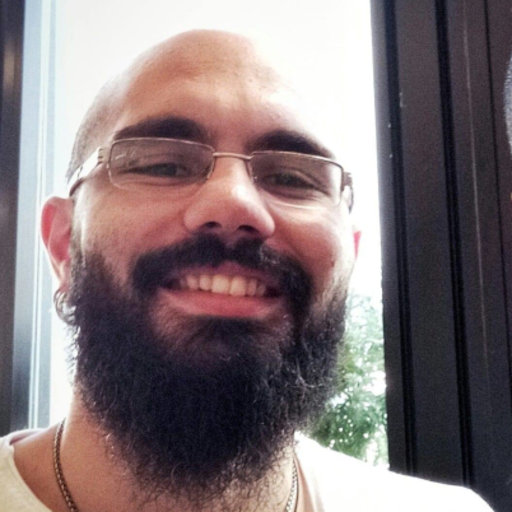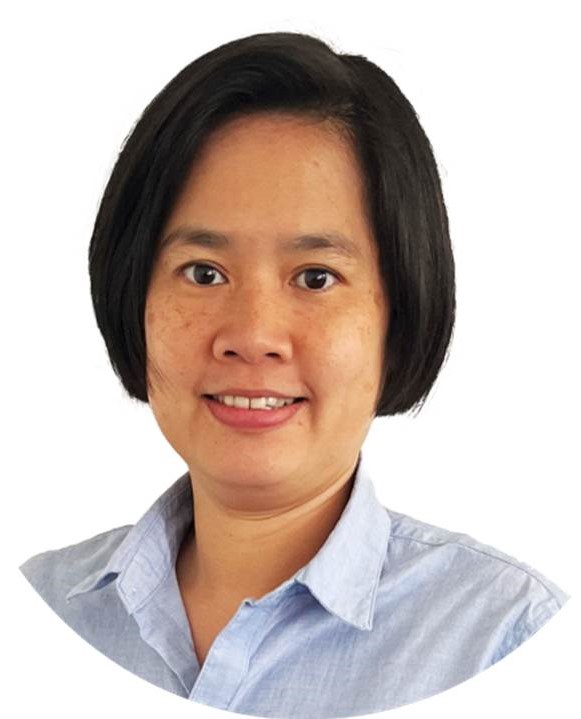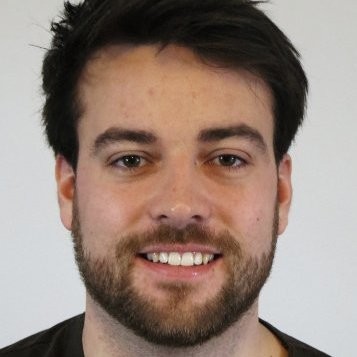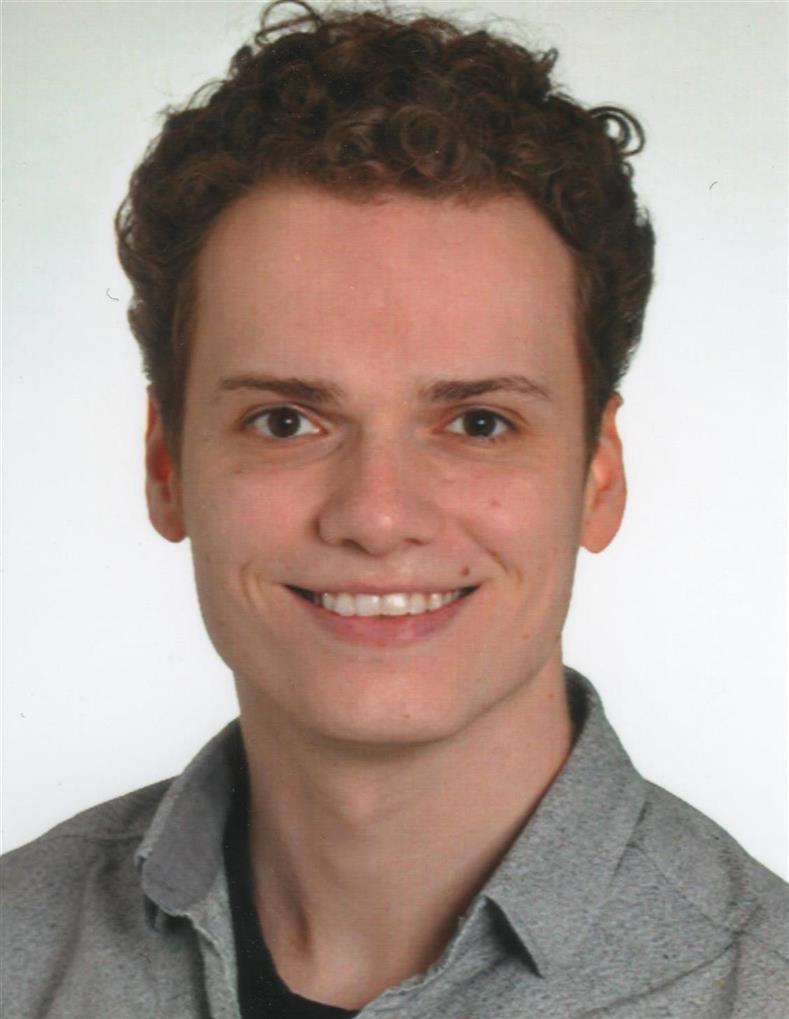
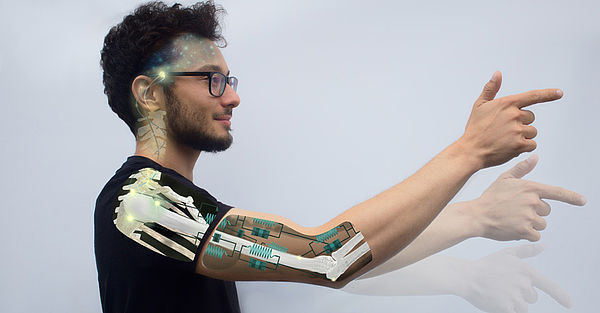
Die Forschungsgruppe „Multi-Level Modeling in Motor Control and Rehabilitation Robotics“ untersucht die Erzeugung und Kontrolle aktiver biologischer Bewegungen. Wir entwickeln Modelle und Computersimulationen des neuro-muskulo-skelettalen Systems. In einem Mehrskalen-Ansatz können wir die unterschiedlichen hierarchischen Ebenen berücksichtigen, die zur Bewegungserzeugung beitragen. Unser interdisziplinärer Ansatz integriert Konzepte der Biophysik, Biomechanik und Motorik.
Mit diesem Ansatz leisten wir einen Beitrag zur Aufklärung der grundlegenden sensomotorischen Mechanismen in der Kontrolle von Bewegungen. Außerdem untersuchen wir die Zusammenhänge und Auswirkungen bei deren Dysfunktion durch neurologische Erkrankungen. Mit einem tieferen Verständnis der kausalen Zusammenhänge der Bewegungsdynamik, der beeinträchtigten Kontrolle und der neuro-muskulären Interaktion legen wir die Grundlagen für funktionale Assistenzsysteme im Bereich Rehabilitationsrobotik.
Die Gruppe ist Teil der Regionalen Forschungsallianz „System Mensch“ zwischen der Universität Tübingen und der Universität Stuttgart. Unser Ziel ist es die neuro-wissenschaftliche Expertise in Tübingen mit der Expertise in Systemwissenschaft und Computer Simulation am Stuttgarter Exzellenzcluster SimTech (SC SimTech) zusammenzuführen.
Model-based concepts for the control of assistive devices
We develop neuro-musculo-skeletal computer simulations of impaired motor control. These models can be used to estimate design criteria for assistive devices. Furthermore, such models could be used to evaluate control strategies for assistive devices already in the design phase.
In collaboration with Syn Schmitt at Uni Stuttgart (https://www.imsb.uni-stuttgart.de/research/cbb/) and Christoph Keplinger at MPI-IS (https://rm.is.mpg.de/)
Selected publications: Stollenmaier, K., Rist, I. S., Izzi, F., & Haeufle, D. F. B. (2020). Simulating the response of a neuro-musculoskeletal model to assistive forces: implications for the design of wearables compensating for motor control deficits. *2020 8th IEEE RAS/EMBS International Conference for Biomedical Robotics and Biomechatronics (BioRob)*, 779–784. https://doi.org/10.1109/BioRob49111.2020.9224411
Compensating for expected step-down perturbations: modelling anticipatory control strategies in human walking
In preparation for a step-down, humans change the activation patterns of individual muscles already during the last ground contact before the step-down. By reducing muscle activity in the stance leg, they lower the height of their body's center of mass (Müller et al., 2020). In this project, we further investigate this anticipatory adaptation strategy with the help of a muscle reflex model and perturbation simulations.
Contributors: Lucas Schreff, in collaboration with Roy Müller at Klinikum Bayreuth (<https://www.researchgate.net/lab/GaitLab-Klinikum-Bayreuth-Roy-Mueller>)
Selected publications: Müller, R., Vielemeyer, J. & Häufle, D. F. B. (2020). Negotiating ground level perturbations in walking: Visual perception and expectation of curb height modulate muscle activity. Journal of Biomechanics, 113, 110121. doi.org/10.1016/j.jbiomech.2020.110121
Modelling motor control in rare neurodegenerative diseases
Motor control abnormalities are key symptoms in several rare neurodegenerative diseases. We contribute to a project in which our colleagues study the development and progression of movement dysfunctions by assessing kinematics of premanifest and manifest patients. Our role in this project is to develop neuro-mechanical models with the aim to develop a more detailed understanding of the progressive character of motor control dysfunction. Especially, we are interested in the relationship between altered neuromuscular reflexes and kinematics.
Contributors: Christian Laßmann, in Collaboration with Winfried Ilg and Ludger Schoels, HIH Tübingen
The contribution of muscles to the control of movement: quantifying morphological computation
Muscle fibres possess complex, nonlinear viscous properties, which allow to counter unexpected perturbations with zero time delay. This feature is critical during agile, legged locomotion, e.g., hopping and running, where sensory blindness due to neurotransmission delays can result in dangerous falls. By expanding the current understanding of the stabilising capacity of fibre viscosity, we aim to unveil new design principles for technical solutions in the field of legged robotics and medical rehabilitation/assistance.
Contributors: Fabio Izzi and Matthew Araz, In collaboration with MPI-IS (Link: dlg.is.mpg.de) and Uni Stuttgart (Link: www.inspo.uni-stuttgart.de/institut/av/)
Mo, A., Izzi, F., Haeufle, D. F. B., & Badri-Spröwitz, A. (2020). Effective Viscous Damping Enables Morphological Computation in Legged Locomotion. *Frontiers in Robotics and AI - Soft Robotics*, *7*(August), 1–15. doi.org/10.3389/frobt.2020.00110
Leveraging morphological computation in autonomous control
Muscle-driven biological systems effortlessly outperform even the most sophisticated robots in terms of adaptivity, longevity and complexity of behaviour. However, widespread adoption of biomimetic devices is partially hindered by the difficulty of precisely controlling muscular morphologies, for which classical control approaches tend to fail. We therefore aim to control these systems with novel reinforcement learning techniques, leveraging their ability to deal with complex nonlinear actuators. The combination of autonomously learning agents with biomechanically inspired morphologies may unlock some of the secrets encoded by millions of years of evolution, while dealing with the unique control difficulties that these morphologies exhibit.
Contributors: Pierre Schumacher, in Collaboration with Georg Martius at MPI-IS (<https://al.is.mpg.de/>) and Dieter Büchler at MPI-IS (https://www.is.mpg.de/person/dbuechler) and Syn Schmitt at Uni Stuttgart (Link: www.imsb.uni-stuttgart.de/research/cbb/).
Selected publications: Haeufle, D. F. B., Wochner, I., Holzmüller, D., Driess, D., Günther, M., & Schmitt, S. (2020). Muscles Reduce Neuronal Information Load: Quantification of Control Effort in Biological vs. Robotic Pointing and Walking. *Frontiers in Robotics and AI*, *7*, Research topic: Recent Trends in Morphological Com. doi.org/10.3389/frobt.2020.00077
Wochner, I., Schumacher, P., Martius, G., Büchler, D., Schmitt, S., & Haeufle, D. (2022). Learning with Muscles: Benefits for Data-Efficiency and Robustness in Anthropomorphic Tasks. Conference on Robot Learning (CoRL), accepted. https://doi.org/10.48550/arXiv.2207.03952
Laßmann, C., Ilg, W., Schneider, M., Völker, M., Haeufle, D. F. B., Schüle, R., Giese, M., Schöls, L., & Rattay, T. W. (2022). Specific gait changes in prodromal hereditary spastic paraplegia type 4 - preSPG4 study. Movement Disorders. https://doi.org/10.1002/mds.29199
Schreff, L., Haeufle, D. F. B., Vielemeyer, J., & Müller, R. (2022). Evaluating anticipatory control strategies for their capability to cope with step-down perturbations in computer simulations of human walking. Scientific Reports, 12(1).https://doi.org/10.1038/s41598-022-14040-0
Karakostis, F. A., Haeufle, D., Anastopoulou, I., Moraitis, K., Hotz, G., Tourloukis, V., & Harvati, K. (2021). Biomechanics of the human thumb and the evolution of dexterity. Current Biology, 31(6), 1317-1325.e8. https://doi.org/10.1016/j.cub.2020.12.041
Haeufle, D., Stollenmaier, K., Heinrich, I., Schmitt, S., Ghazi-Zahedi, K. (2020). Morphological computation increases from lower- to higher-level of biological motor control hierarchy, Frontiers in Robotics and AI. https://doi.org/10.3389/frobt.2020.511265.
Haeufle, D. F. B., Wochner, I., Holzmüller, D., Driess, D., Günther, M., & Schmitt, S. (2020). Muscles Reduce Neuronal Information Load: Quantification of Control Effort in Biological vs. Robotic Pointing and Walking. Frontiers in Robotics and AI, 7, Research topic: Recent Trends in Morphological Com. https://doi.org/10.3389/frobt.2020.00077
The full list of publications is available here.
Coming soon

Hertie-Zentrum für Neurologie
Hertie-Institut für klinische Hirnforschung
Otfried-Müller-Str. 25
72076 Tübingen
Tel.: +49 (0)7071 29-88873
Fax: +49 (0)7071 29-25011




